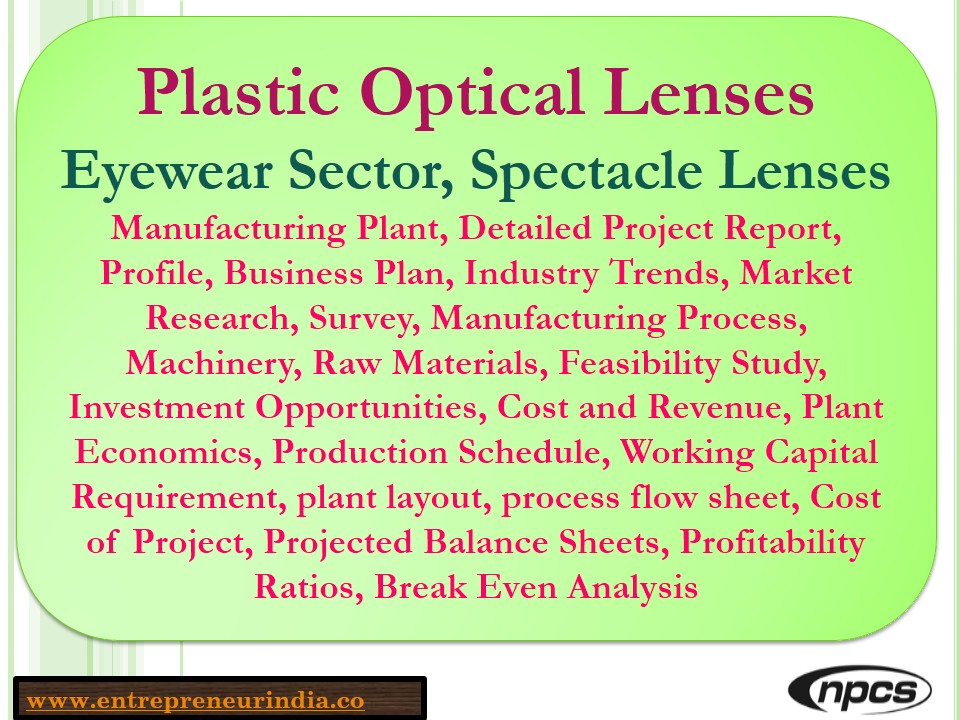
Plastic optical lenses have been increasingly adopted in modern eyewear due to their light weight, impact resistance, and optical clarity. As eyewear fashion and vision correction continue to evolve, a significant shift has occurred from traditional glass lenses to plastic lenses. Consequently, the global eyewear market has experienced rapid transformation, with plastic optical lenses playing a dominant role in both prescription and non-prescription glasses.
Although glass lenses were once considered the gold standard, they have gradually been replaced. The change has been driven by advancements in plastic polymers and coatings, resulting in improved comfort, durability, and versatility for consumers.
Overview of Plastic Optical Lenses
Plastic lenses are manufactured using synthetic polymers that are either thermoplastic or thermosetting. Materials like CR-39 (Columbia Resin #39) and polycarbonate have been widely accepted. In particular, CR-39 is preferred for its optical quality and low cost, while polycarbonate lenses are selected when durability and impact resistance are prioritized. Moreover, high-index plastic lenses are chosen when a thinner and lighter profile is desired for high-power prescriptions.
See Also – Cold Storage Detailed Project
The optical clarity, refractive index, and weight of these lenses are determined by the specific type of plastic used. Therefore, careful selection of material has always been considered crucial for meeting various vision correction requirements.
Materials Used in Plastic Lenses
Several materials are utilized in the production of plastic lenses:
-
CR-39: Known for its excellent optical properties and low dispersion, CR-39 is used in about 50% of plastic lenses worldwide.
-
Polycarbonate: Chosen for its impact resistance, this material is often used in children’s eyewear, safety glasses, and sportswear.
-
High-Index Plastics: These materials are selected for creating thinner and lighter lenses, especially beneficial for high prescriptions.
-
Trivex: Considered a newer alternative to polycarbonate, Trivex offers both optical clarity and lightweight benefits.
Each material is processed through specific molding techniques, and coatings are applied to enhance properties such as scratch resistance, anti-reflection, and UV protection.
Manufacturing Process of Plastic Optical Lenses
The manufacturing of plastic lenses involves a combination of chemical processing, molding, curing, and surface finishing. The steps outlined below illustrate the process typically followed in lens production.
1. Material Preparation
To begin with, raw plastic resin is selected based on the desired lens type. The resin is usually in liquid or granule form. Then, it is filtered and de-aerated to eliminate impurities and bubbles. For thermosetting plastics like CR-39, monomers are mixed with initiators to initiate polymerization.
2. Casting or Injection Molding
Two main techniques are employed—cast molding and injection molding.
-
In cast molding, the liquid monomer is poured into a lens mold and is polymerized using heat or ultraviolet light.
-
In injection molding, solid granules are heated and injected into a metal mold under high pressure. This process is often used for polycarbonate lenses.
Once the lens is formed, it is cooled and removed from the mold. Precision is maintained during this step to ensure optical clarity and proper curvature.
3. Hard Coating and Surface Treatment
Although plastic lenses offer many benefits, their surfaces are softer than glass. Therefore, a hard coating is applied to enhance scratch resistance. Additionally, anti-reflective (AR) coatings, hydrophobic layers, and UV filters are also used. These coatings are either vacuum-deposited or dip-coated onto the lens surface.
Moreover, lenses are frequently tinted or photochromic treatments are added to meet specific aesthetic or functional demands. As a result, the final product becomes more adaptable to outdoor and indoor use.
4. Surfacing and Edging
Lenses are next surfaced and edged to match prescription parameters. Machines are employed to grind the lenses according to diopters and required thickness. Afterward, polishing ensures that the lens edges are smooth and comfortable for use in frames.
Furthermore, digital surfacing technologies are now used to customize lenses based on individual eye geometry and frame shape.
Advantages of Plastic Optical Lenses
Plastic lenses have provided multiple benefits that have resulted in their widespread acceptance in the eyewear industry. Some key advantages include:
-
Lightweight: Due to their lower density, plastic lenses are much lighter than glass alternatives.
-
Impact Resistance: Especially with polycarbonate and Trivex, high resistance to impact has been achieved.
-
Versatility: A wide variety of shapes, tints, and coatings can be easily applied to plastic materials.
-
UV Protection: Most plastic lenses inherently block UV rays or can be enhanced with additional coatings.
-
Design Flexibility: Modern fashion eyewear has been made possible through the use of moldable plastic lens materials.
Due to these factors, plastic lenses have been favored for both fashion and safety applications.
Applications of Plastic Lenses
Plastic optical lenses have found applications in numerous fields beyond conventional eyewear. Some major application areas include:
-
Prescription Glasses: Single vision, bifocal, and progressive lenses are produced using plastic materials.
-
Sunglasses: Fashion and protective sunglasses are commonly made with plastic lenses due to ease of tinting.
-
Safety Eyewear: Polycarbonate lenses are mandated in industrial and construction environments for safety glasses.
-
Sports Eyewear: Durability and lightness make plastic lenses ideal for sports goggles and performance eyewear.
-
Medical and Scientific Instruments: Instruments such as microscopes and diagnostic devices use precision plastic optics.
Furthermore, innovations in AR/VR headsets and smart glasses are also being supported by the use of plastic lenses.
Market Trends & Demand
A growing demand for eyewear has been observed globally due to increasing screen time, awareness of eye health, and an aging population. As a result, the plastic lens market has grown significantly. The global eyeglasses market, valued in billions, has been driven by plastic lenses owing to their adaptability.
Additionally, the online sale of eyewear has expanded, pushing demand for lighter and more fashionable lens options. It has also been noted that consumer preference has shifted toward customized lenses that can offer better visual experience and comfort.
Setting Up a Plastic Lens Manufacturing Unit
For entrepreneurs, a plastic optical lens manufacturing business offers viable opportunities. However, the setup requires technical know-how, regulatory compliance, and considerable capital investment.
Key Considerations
-
Machinery and Equipment: Injection molding machines, curing ovens, coating chambers, and digital surfacing machines are required.
-
Raw Materials: A steady supply of resins, additives, dyes, and coatings must be ensured.
-
Trained Workforce: Skilled labor must be employed for machine operation, quality control, and lens finishing.
-
Regulatory Standards: ISO and ophthalmic certifications must be followed for product acceptance.
-
Market Channel: Partnerships with opticians, retail chains, and e-commerce platforms are essential for distribution.
Furthermore, R&D facilities should be included for product innovation and to remain competitive in the market.
Environmental Impact and Sustainability
Although plastic lenses offer many benefits, concerns have been raised about their environmental impact. Since plastic is non-biodegradable, disposal of defective or end-of-life lenses poses a challenge. As a result, sustainable practices have been encouraged.
Several approaches are being adopted, such as:
-
Recycling of Plastic Waste: Scrap lenses and offcuts are being recycled into industrial plastic products.
-
Eco-Friendly Coatings: Water-based and solvent-free coatings are being used in modern production.
-
Biodegradable Materials: Research is underway to develop biodegradable lens materials for the future.
Moreover, awareness campaigns are being conducted to promote responsible disposal and recycling in the optical industry.
See Also – Plastic Recycling Business
Conclusion
Plastic optical lenses have transformed the global eyewear market by offering lightweight, durable, and customizable solutions. While glass lenses were once dominant, a shift has been enabled by advancements in plastic polymers and coating technologies. As a result, greater comfort and affordability have been achieved for millions of consumers. Even though environmental challenges exist, sustainable innovations are being pursued actively. For manufacturers and entrepreneurs, the plastic lens industry presents profitable avenues, especially when quality, compliance, and market trends are carefully considered.





